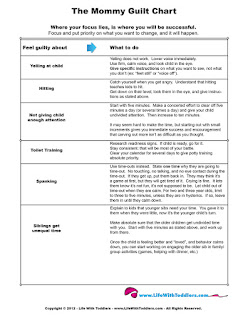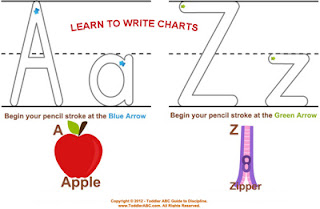The blessed event can be horrible or easy or anywhere in between. It all depends on our child's personality and our approach. For example, if we get all bound and determined with a strong-willed child, we're probably setting ourselves up for a battle.
Toddler Potty Training 2 Week Chart:
Quick Print: www.LifeWithToddlers.com/potty/
Now, I've trained three kids, and of course I've watched all my friends train their kids. I've tried the naked method, the routine method, and the sit-on-the-damn-potty-all-day-until-you-tinkle method, all the while watching my friends battle with tantrums, painstaking progress, and carrying around a portable potty every single place they traveled ("Mind if I dump this pee real quick? We just came from the store!"). In this journey, I've discovered a couple of things: first, all the kids ended up using the potty and adapting to appropriate, current social standards. No one died of embarrassment (well, okay, they did - but only theoretically), no one ended up in therapy over the trauma, and no one (as of yet) has grown up and gone to 3rd grade parties sporting pull-ups. All good news. Second, I've learned that you've got a lot of factors involved in potty training. No one method works for all kids (despite claims of our dear fore bearers) and conventional wisdom changes generation to generation. We modern day parents don't like to upset the little boo-boos, and some of the more forceful or strict methods out there seem rather barbaric.
In my research, I've pored over a couple of books. Toilet Training in Less Than a Day
Stress-Free Potty Training, on the other hand, gives focus to different personalities, recommends praise instead of treats as a reward (you all know how I feel about candy as rewards - gah!), and it goes over the universal strategies as applied to your own child's personality. The only caveat is, you have to read it. (Sigh.) I know we all want a quick answer, but in this case, investing some time and research before you get started can save you a ton of headaches and pee pee to clean up.
Overall, I have a few recommendations:
1. Research ahead of time. Read articles, ask your friends (just for feedback, not advice to take no matter what), or get some books. Read samples of the books before you buy and see which one fits your personality. Get down the lingo, absorb the advice, and find a balance on what approach will work best for you and your child. For example, I would never inconvenience myself with carrying around a damn portable potty all day, nor did I get one for my own home. Cleaning that thing just seems too gross for me. However, I didn't mind clearing the calendar and staying at home for days on end to train my kids. Just me. Everyone is different.
2. Don't use food as rewards. In my experience working with kids and behavior, treats are a temporary motivator and don't allow your kids to experience the reward of a job well done for the sake of a job well done. There's also the big picture of teaching our kids to behave in certain ways only for treats, which leads to a lazy "what's in it for me?" attitude when they're twelve, but we'll leave that aside, as it's assuming you reward your kids often with treats for good behavior, which you don't, do you? (Don't prove me wrong lest I scream.)
3. Make them responsible for their own toileting and cleaning up the messes. This is major step from Toilet Training in Less Than a Day that I really liked. You can do this in a loving, matter-of-fact way that doesn't promote shame for accidents. Rather, it teaches kids the direct and real consequence of having accidents in your undies or flooding the floor. Someone has to clean it up, right? Well, if you are teaching kids to be responsible for their own body and its actions, that is just a natural consequence. It's not a big deal . . . it's just something that needs to be done. When they take part in that, while it may be fun at first, it gets to be a pain in the butt real quick, and it just might be an appropriate motivator for our darlings to get on the ball and embrace the ridiculous notion of relieving ourselves on the porcelain monster.
4. Don't be a wish-wash. It's one thing to get into it and realize it's one, big, fat mistake and you're obviously pushing your child too soon and need to stop the training. It's entirely another if you just get sick of the consistency it takes or you get all mushy that your child is a little resistant and tearful. I mean, really, turn the tables; if someone suddenly told your adult-self that toilets weren't acceptable anymore and you had to start using a diaper, you'd freak a little, right? You've been using a toilet for (we won't count how many) years and to change the routine would upset you. It's the same for your kids. You're changing the rules of their little world and it's upsetting. Just go back to advice #1 on my list and research ahead of time to save yourself the agony and confusion. If you've read up on the readiness factors and you feel good that the timing is right, be confident in your decision and forward ho. Don't go back and forth with diapers then no diapers because you'll confuse the tar out of your child and that's just not fair.
5. Try to be patient. This process is time consuming and will doubtless piss you off sometimes. Such is life. Don't take it out on your kid, because they are looking to you for guidance on this process. On the other hand, be forgiving of yourself if you get frustrated and blow up. We are human and being a mommy is tiring! Just learn from your mistakes and try to do better. I'm a spiritual gal, and I'm telling you, if you pray for patience, you're going to get a ton of opportunities to practice it so that you'll learn. :) Not a bad thing.
It's not lost on me that I just wrote a very long post and didn't give you any step-by-steps, but that's the point! You need to research the different methods and figure out what is best for you both. I'd be a stinky friend if I said, "You have to do it this way...it works!" Because that's a honkin' lie. Your child is unique, and you have your own way of doing things as well. Figure out a balance that will give you and your child the best chance of success, the most quickly, with the least amount of tears. No small feat, but I know you can do it! :) When this is all over, we'll toast to your genius and send happy vibes to all the other parents out there who are scared out of their wits. You can then confidently tell them, "Relax, honey. It's all good!"
Happy peeing my friends!
Free Printable Toddler Potty Training 2 Week Chart:
Quick Print: www.LifeWithToddlers.com/potty/
Free Printable Toddler Potty Training 1 Week Chart:
Quick Print: www.LifeWithToddlers.com/potty/
If you are going to use a potty chair, this one is a favorite Baby Bjorn Potty Chair [many colors to choose]














